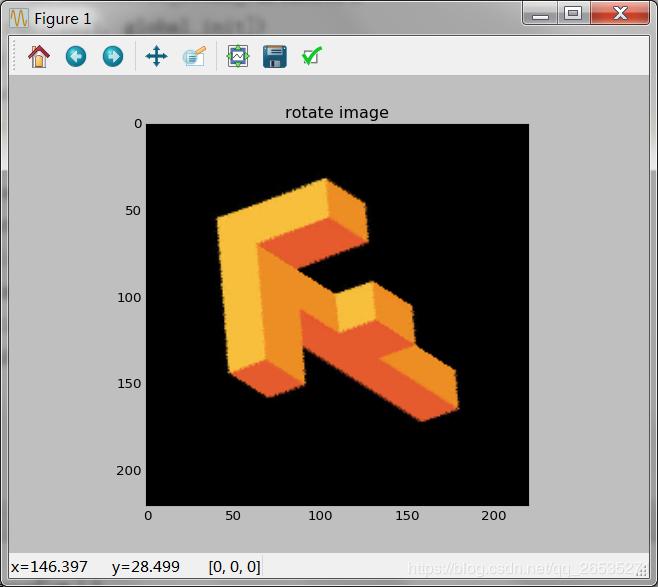在使用深度学习对图像进行训练时,对图像进行随机旋转有助于提升模型泛化能力。然而之前在做旋转等预处理工作时,都是先对图像进行旋转后保存到本地,然后再输入模型进行训练,这样的过程会增加工作量,如果图片数量较多,生成旋转的图像会占用更多的空间。直接在训练过程中便对图像进行随机旋转,可有效提升工作效率节省硬盘空间。
使用TensorFlow对图像进行随机旋转如下:
TensorFlow版本为1.13.1
#-*- coding:utf-8 -*- ''' 使用TensorFlow进行图像的随机旋转示例 ''' import tensorflow as tf import numpy as np import cv2 import matplotlib.pyplot as plt img = cv2.imread('tf.jpg') img = cv2.resize(img,(220,220)) img = cv2.cvtColor(img,cv2.COLOR_BGR2RGB) def tf_rotate(input_image, min_angle = -np.pi/2, max_angle = np.pi/2): ''' TensorFlow对图像进行随机旋转 :param input_image: 图像输入 :param min_angle: 最小旋转角度 :param max_angle: 最大旋转角度 :return: 旋转后的图像 ''' distorted_image = tf.expand_dims(input_image, 0) random_angles = tf.random.uniform(shape=(tf.shape(distorted_image)[0],), minval = min_angle , maxval = max_angle) distorted_image = tf.contrib.image.transform( distorted_image, tf.contrib.image.angles_to_projective_transforms( random_angles, tf.cast(tf.shape(distorted_image)[1], tf.float32), tf.cast(tf.shape(distorted_image)[2], tf.float32) )) rotate_image = tf.squeeze(distorted_image, [0]) return rotate_image global_init = tf.global_variables_initializer() with tf.Session() as sess: init = tf.initialize_local_variables() sess.run([init, global_init]) coord = tf.train.Coordinator() threads = tf.train.start_queue_runners(coord=coord) image = tf.placeholder(shape=(220, 220, 3), dtype=tf.float32) rotate_image = tf_rotate(image, -np.pi/2, np.pi/2) output = sess.run(rotate_image, feed_dict={image:img}) # print('output:',output) plt.imshow(output.astype('uint8')) plt.title('rotate image') plt.show()结果如下:
原图:

随机旋转后的图:

以上就是本文的全部内容,希望对大家的学习有所帮助,也希望大家多多支持python博客。
-
<< 上一篇 下一篇 >>
标签:numpy matplotlib
使用TensorFlow对图像进行随机旋转的实现示例
看: 1116次 时间:2020-10-30 分类 : python教程
- 相关文章
- 2021-12-20Python 实现图片色彩转换案例
- 2021-12-20python初学定义函数
- 2021-12-20图文详解Python如何导入自己编写的py文件
- 2021-12-20python二分法查找实例代码
- 2021-12-20Pyinstaller打包工具的使用以及避坑
- 2021-12-20Facebook开源一站式服务python时序利器Kats详解
- 2021-12-20pyCaret效率倍增开源低代码的python机器学习工具
- 2021-12-20python机器学习使数据更鲜活的可视化工具Pandas_Alive
- 2021-12-20python读写文件with open的介绍
- 2021-12-20Python生成任意波形并存为txt的实现
-
搜索
-
-
推荐资源
-
Powered By python教程网 鲁ICP备18013710号
python博客 - 小白学python最友好的网站!